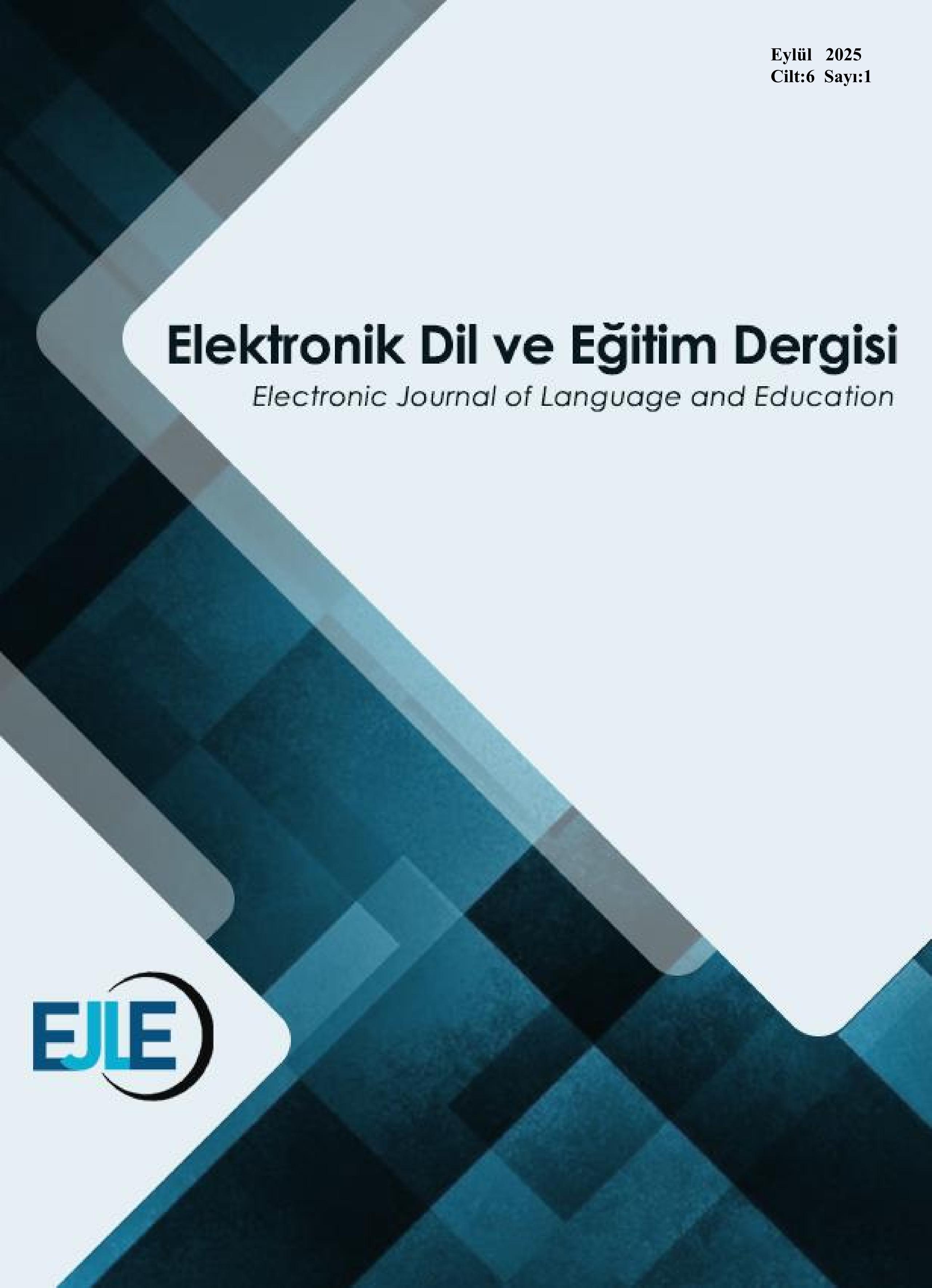Author :
Abstract
Dil bilgisi yazımı ve öğretiminde eş zamanlılık-art zamanlılık ekseninde meydana gelen görüş ayrılıklarının zeminini yükseköğretim ile alt öğretim kademeleri arasında dil bilgisi konu ve kavramları bakımından yaşanan öğretim çelişkileri oluşturmaktadır. Türkçenin en işlek isimden fiil yapan eklerinden olan +lA- ile fiilden fiil yapan -n-, -t- ve -ş- eklerinin kurduğu birlikteliğin yazımı ve öğretimi, bunun en tipik örneklerinden bir tanesidir. Bu çalışma, +lA- eki ve türevlerinin biçim bilimsel tahlillerinde ortaya çıkan ortaya çıkan yazım ve öğretim sorunlarına farklı bir bakış açısıyla yaklaşarak Türk dili içerisinde işleyen bir mekanizmaya dikkat çekmeyi ve yazı dili kullanıcılarına bir kazanım önerisi sunmayı amaçlayan nitel araştırma yöntemlerinden betimleyici bir çalışmadır. Bu çalışmada +lA- ekinin fiilden fiil yapma ekleriyle birleşimleri incelenmiş ve her iki ekin birden “yapma, olma, dönüşme” işlevi bildirerek yardımcı fiil görevi gördüğü örneklerde tek bir ek haline geldiği belirlenmiştir. Ayrıca ekin bir de fiilden isim yapan eklerle birleşimleri incelenmiş, bu birleşimlerde altı aşamalı bir sürecin sonunda +lA- ekinin burada da fiilden isim yapan eklerle aynı işlev ve görevde birleşerek tek bir ek hâline geldiği örnekler görülmüştür. Bu anlayış doğrultusunda +lAn-/+lAt-/+lAş- ekleri gibi -(X)klA- ve benzeri eklerin de bağımsız birer yapım eki olarak kabul edilebileceği öne sürülmüştür. Neticede yapım eklerinin durağan bir olgu değil devingen bir sürecin işlediği ve Türkçenin sınırsız üretim gücünü yansıtan bir mekanizmanın ürünleri olduğu sonucuna varılmıştır. Yapım ekleri kriterlerinin yeniden sorgulanarak netleştirilmesi ve gramer yazımında bu devingen sürecin dikkate alınarak yapım ekleri alt başlıklarında yeni bölümlenmeler açılması gerektiği önerilmiştir.
Keywords
Abstract
The basis of the differences of opinion on the axis of synchronicity-diachrony in grammar writing and teaching is the teaching contradictions between higher and lower levels of education in terms of grammar subjects and concepts. One of the most typical examples of this is the writing and teaching of the combination of +lA-, which is one of the busiest nounverb suffixes of Turkish, and -n-, -t- and -ş-, which make verbs from verbs. This study is a descriptive study from qualitative research methods that aims to draw attention to a mechanism operating in the Turkish language by approaching the spelling and teaching problems that arise in the morphological analysis of +lA- suffix and its derivatives from a different perspective and to offer a gain proposal to the users of the written language. In this study, the combinations of +lA- with verb-forming suffixes were analyzed and it was determined that both suffixes became a single suffix in the examples where both suffixes functioned as auxiliary verbs by expressing the function of “making, becoming, transforming”. In addition, the combinations of the suffix with suffixes that make nouns from verbs were also examined, and at the end of a six-step process in these combinations, it was seen that +lA- became a single suffix by combining with suffixes that make nouns from verbs in the same function and task. In line with this understanding, it has been suggested that -(X)klA- and similar suffixes, such as +lAn-/+lAt-/+lAş- suffixes, can be considered as independent construction suffixes. As a result, it is concluded that suffixes are not a static phenomenon, but the products of a dynamic process and a mechanism that reflects the unlimited production power of Turkish. It is suggested that the criteria for construction suffixes should be re-questioned and clarified, and new sections should be opened under the subheadings of construction suffixes by taking this dynamic process into account in grammar writing.





